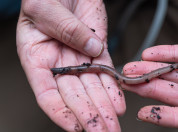Search
Filter by
Type
Tags
Dossiers
Themes
Departments
Active filters
1044 search results
Search results
-
Molecular laboratory
The molecular laboratories offer a wide range of facilities needed for handling, preparing and analysing a wide variety of DNA and/or RNA samples. The lab is well-equipped, and in addition to the general molecular laboratory there are several specialised laboratories such as an MLII Lab, an RNA Lab and a PCR lab with UV-cupboards.
-
NCSE (National Centre for Soil Ecology)
National Centre for Soil Ecology
-
Jeannette Hagman
Head of Finances
-
Miquel Lurling
Guest researcher
-
Alexandra Bösche
Personnel/HRM Staff
-
Shuwen Han
PhD Candidate
-
Seasonal timing of growth and reproduction: ultimate functions and proximate mechanisms
For many species, there is only a short period in the annual cycle in which conditions are suitable for reproduction or growth.
-
Wild clocks
We study the selection and evolution of circadian clocks in wild birds via measurements of rhythms in the wild and in the laboratory
-
Light on Nature
We produce more and more light at night. Virtually everybody in Europe or the US lives in a light polluted place: all areas where artificial light always exceeds the light of the moon and the stars. These areas expand with about two percent per year, while already light polluted areas become even brighter at night.
-
Gabriel Charvalakis
PhD Candidate
